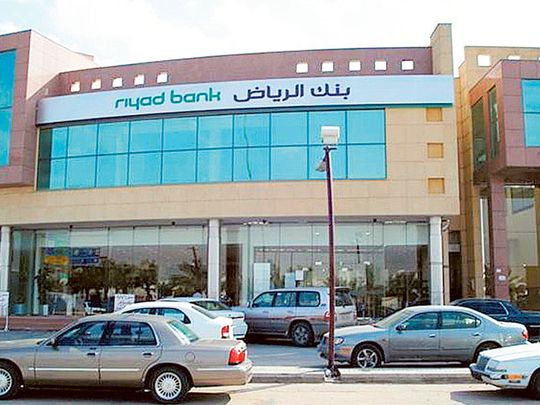
Dubai: As banks in Saudi Arabia have started reporting preliminary results for the first quarter of 2015, analysts expect weaker growth in assets and profitability both year on year and quarter on quarter basis.
“We expect weakening loan growth coupled with severe price competition, asset yield pressures on strong liquidity, limited improvement on cost of funds, regulatory pressures on retail banking fees, and gradual increases in cost of risk as the provisioning cycle bottomed out in 2014,” said Suha Urgan and Taher Safieddine, in a note based on their discussions with the senior managements of banks such as National Commercial Bank (NCB), Riyad Bank, Al Rajhi Bank, Samba and Saudi Hollandi Bank (SHB).
Keeping with Shuaa’s estimates Riyad Bank, Saudi Arabia’s third-largest listed lender by assets, reported an 8.6 per cent increase in its first-quarter net profit on Tuesday while most of the results are expected in the week ahead.
“Our discussions with the banks confirmed our cautious view on the Kingdom of Saudi Arabia banking sector with the overall tone from the banks turning slightly more bearish than that we got in our meetings in the fourth quarter of 2014,” analysts said.
Decline in oil prices and the uncertain outlook has turned banks across the GCC cautious in their outlook. Banks in Saudi Arabia, home to the largest oil reserves in the Gulf, are exposed to the vulnerabilities linked to the oil prices. In keeping with the underlying economic trends Saudi banks have lowered 2015 loan growth expectations.
“We found a slight cut in 2015 loan growth estimates compared to what banks were forecasting in the fourth quarter of 2014,” Shuaa analysts said.
The current consensus is in the range of 7-8 per cent year on year growth compared to 8-10 per cent previously. SHB is the only exception with a double digit loan growth forecast for 2015.
Although no major deterioration observed in the asset quality of the Saudi banking system, banks have turned more cautious on non-performing loans (NPLs) and admit the link between NPL formation and oil price.
Across the board banks are facing yield pressure on retail lending. Retail loans offer very few opportunities for growth in 2015 largely s due to substantially lower mortgage lending activity after the introduction of 70 per cent loan to value ration (LTV) requirement.
Some of the banks saw their mortgage lending dropping by as much as 80 per cent year on year in January and February and very weak activity on personal loans due to the two-month bonus salaries paid in February.
Demand decline
Although the government’s fiscal position is strong from 2015 with no structural issues on the macro outlook, analysts say a prolonged low oil price environment and the use of reserves to fill the budget deficits could eventually result in sovereign borrowings. According to Shuaa’s assessment of bank managements, the resilience of the fiscal position may come to test only in 2016, the earliest, if low oil price and heavy infrastructure spending sustains.
Following the announcement of 2015 budget, Saudi Arabia’s finance minister did not rule out borrowing to fund the deficit and highlighted the potential of getting favourable borrowing rates in current market conditions. “We discussed with the banks the possibility of a crowding-out effect (i.e. limited capacity to lend to private sector) in case of a government bond issuance which would be mainly absorbed by the Saudi banks. The banks see no risk as private sector credit demand is already showing signs of slowdown in first quarter,” said Shuaa analysts.












